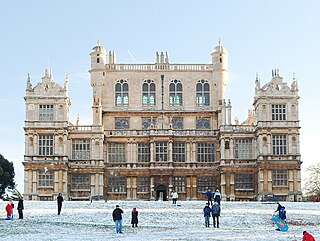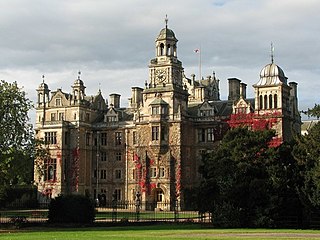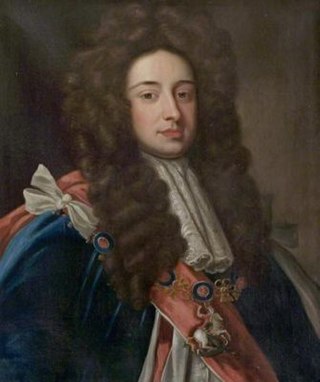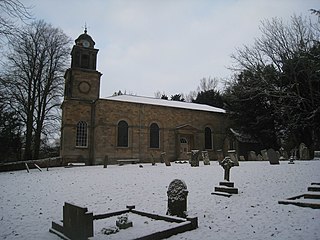Records held
Manuscript and archive holdings include the papers of leading Nottinghamshire families and their estates, the records of local businesses and organisations, the personal papers of political, diplomatic, literary, scientific and academic figures, as well as some of the historical records of the university and its predecessor, University College Nottingham.
The most important collections of family and estate papers, with material ranging in date from the 12th to the 20th centuries, include:
- Papers of the Pelham-Clinton family, Dukes of Newcastle-under-Lyne, of Clumber Park, Nottinghamshire
- Papers of the Cavendish family, Dukes of Newcastle upon Tyne and the Cavendish-Bentinck family, Dukes of Portland, of Bolsover Castle and Welbeck Abbey, Nottinghamshire, including the Portland Literary Papers from the library at Welbeck Abbey
- Papers of the Willoughby family, Barons Middleton, of Wollaton Hall, Nottinghamshire and Middleton Hall, Warwickshire
- Papers of the Pierrepont family, Earls Manvers, of Holme Pierrepont Hall and Thoresby Hall, Nottinghamshire
- Papers of the Monckton-Arundell family, Viscounts Galway, of Serlby Hall, Nottinghamshire
- Papers of the Drury-Lowe family of Locko Park, Derbyshire
- Papers of the Denison family of Ossington, Nottinghamshire, including John Evelyn Denison, 1st Viscount Ossington (1800-1873), Speaker of the House of Commons
- Papers of Sir Andrew Buchanan, 1st Baronet (1807-1882), Diplomat
- Papers of the Mellish family of Blyth Hall and Hodsock Priory, Nottinghamshire
- Papers of the Clifton family of Clifton, Nottingham
- Papers of the Eyre family of Grove, Nottinghamshire
- Papers of the Holden family of Nuthall Temple, Nottinghamshire
- Papers of the Parkyns family of Bunny, Nottinghamshire
- Papers and Correspondence of Charles Brinsley Marlay of Westmeath, Ireland and his family, including the Bury family, Earls of Charleville
- Correspondence of the Wrench family of Baslow, Derbyshire
- Correspondence of Mary Howitt (1799–1888), writer
Literary collections include:
- The Wollaton Library Collection, containing 10 medieval manuscripts. Items from the Wollaton Library Collection feature in the web resource Wives, Widows and Wimples
- Papers of and relating to D. H. Lawrence (1885–1930), writer. The collections include original correspondence, artworks and literary papers of D. H. Lawrence, as well as items relating to him, such as research papers, biographical papers, photographs, audio recordings and correspondence of his friends and associates. There is also a Lawrence Special Collection of published works, including first editions, periodical literature and critical literature.
- Papers of Henry Kirke White (1785-1806), poet
- The Cambridge Drama collection of printed works of drama or about the stage. It includes items which had previously belonged to the Cambridge Garrick Club.
- The Cambridge Shakespeare Collection, of editions of Shakespeare's works, and illustrated volumes with engravings and drawings of characters, actors, and scenes from the plays.
- The Woodward Collection, of printed works concerning the Bacon-Shakespeare controversy
- The Coventry Patmore collection, of printed volumes by and about the poet Coventry Patmore (1823-1896)
- The Briggs Collection of pre-1851 educational literature
- The Eiríkur Benedikz Icelandic Collection of printed material relating to Norse, Icelandic and Viking Studies
Records of local businesses and organisations include:
The historical records of the University of Nottingham, formerly University College, Nottingham until the Royal Charter granted full University status in August 1948, relate particularly to the development of the university from the 1920s to the 1960s: coverage of the early years following the opening of the college in 1881, and of the last 50 years is less comprehensive. The records include administrative files, accounts, correspondence, minutes, plans, student registers, newspaper cuttings, ephemera, photographs, papers of the Students’ Union and various other student and staff societies, and professional and personal papers of several former members of staff.
Catalogues and digital resources
Catalogue records of the Special Collections are available through the University of Nottingham Library Online Catalogue.
Catalogue records of the manuscript and archive collections are available on the university's own Manuscripts Online Catalogue.
The official website of Manuscripts and Special Collections includes more detailed descriptions of collections and subject areas, online exhibitions, e-learning resources, and digitised versions of visual material.
Manuscripts and Special Collections contributed 42 catalogues to the national Access 2 Archives programme, which are now searchable via The National Archives' Discovery Catalogue.
Over 400 collection level descriptions are also available on the Archives Hub
History
The collection of manuscripts and local archives in the University Library was encouraged initially by G.E. Flack, the first College Librarian. References in minutes of the University Council from the 1930s refer to the University Library's accession of significant gifts and deposits of archival materials, a process which accelerated after the war. The first archivist was appointed in 1948, and a separate Department of Manuscripts was established within the University Library in 1958 under the management of a newly appointed Keeper of the Manuscripts.
Subsequent developments have added conservation facilities. With the move into new library premises in 1973 (the Hallward Library) the department acquired purpose-built accommodation and facilities which supported a steady expansion in its holdings and activities.
Early or rare imprints of printed books formed the basis of Special Collections in the areas of arts and social sciences, science and engineering, medicine, agriculture and food sciences, and law. In addition, several of the subject libraries acquired particular named Special Collections, devoted to particular subjects or preserving the libraries of particular individuals and institutions. The East Midlands Collection was developed to serve both as a reference and loan collection for local studies and a special collection of early and rare imprints concerning the region.
In 1989 the Department of Manuscripts became the Department of Manuscripts and Special Collections, with a common reading room and staffing. Since then subject collections from the medical and law libraries have moved into Special Collections. The most substantial internal transfer was the acquisition in 1995 of the library of the former Institute of German, Austrian and Swiss Affairs, including both published and archival holdings.
In 2006 the department moved to new premises at King's Meadow Campus, the university's new campus at Lenton Lane. This provided a reading Room, Store, Conservation, reprographical digitisation workshops and offices, with space for more expansion.
The office has been appointed by the Lord Chancellor as a repository for specified classes of public records (hospital records; British Coal, research report series). It has been approved for the custody of collections of national significance accepted in lieu of tax. It is recognised by the Master of the Rolls as a repository for manorial documents. It is also approved by the Bishop of Southwell and Nottingham as a repository for the archive of the former Archdeaconry of Nottingham.
In October 2005, the Portland (London), Portland of Welbeck, and Newcastle of Clumber papers won recognition through the Designation Scheme of the Museums, Libraries and Archives Council (MLA), as being of outstanding national and international importance. The D. H. Lawrence Collection was similarly recognized in February 2008.

Nottingham is a city and unitary authority area in Nottinghamshire, East Midlands, England. It is located 33 miles (53 km) south-east of Sheffield and 45 miles (72 km) north-east of Birmingham. Nottingham is the legendary home of Robin Hood and to the lace-making, bicycle and tobacco industries. The city is also the county town of Nottinghamshire and the settlement was granted its city charter in 1897, as part of Queen Victoria's Diamond Jubilee celebrations.

Nottinghamshire is a ceremonial county in the East Midlands of England. The county borders South Yorkshire to the north-west, Lincolnshire to the east, Leicestershire to the south, and Derbyshire to the west. The largest settlement is the city of Nottingham (323,632), which is also the county town.

Worksop is a market town in the Bassetlaw District in Nottinghamshire, England. It is located 15 miles (24 km) south of Doncaster, 15 miles (24 km) south-east of Sheffield and 24 miles (39 km) north of Nottingham. Located close to Nottinghamshire's borders with South Yorkshire and Derbyshire, it is on the River Ryton and not far from the northern edge of Sherwood Forest. Other nearby towns include Chesterfield, Gainsborough, Mansfield and Retford. The population of the town was recorded at 44,733 in the 2021 Census.

William Cavendish, 1st Duke of Newcastle upon Tyne, KG, KB, PC, who after 1665 styled himself as Prince William Cavendish, was an English courtier and supporter of the arts. He was a renowned horse breeder, as well as being patron of the playwright Ben Jonson and the intellectual group known as the Welbeck Circle.

William Henry Cavendish Cavendish-Bentinck, 3rd Duke of Portland was a British Whig and then a Tory politician during the late Georgian era. He served as chancellor of the University of Oxford (1792–1809) and as Prime Minister of Great Britain (1783) and then of the United Kingdom (1807–1809). The gap of 26 years between his two terms as prime minister is the longest of any British prime minister. He was also an ancestor of King Charles III through his great-granddaughter Cecilia Bowes-Lyon, Countess of Strathmore and Kinghorne.

William John Cavendish-Scott-Bentinck, 5th Duke of Portland, styled Lord John Bentinck before 1824 and Marquess of Titchfield between 1824 and 1854, was a British Army officer and peer, most remembered for his eccentric behaviour. A recluse who preferred to live in seclusion, he had an elaborate underground maze excavated under his estate at Welbeck Abbey near Clumber Park in North Nottinghamshire.

Baron Middleton, of Middleton in the County of Warwick, is a title in the Peerage of Great Britain, created in December 1711 for Sir Thomas Willoughby, 2nd Baronet, who had previously represented Nottinghamshire and Newark in Parliament. It was one of twelve new peerages created together and known as Harley's Dozen, to give a Tory majority in the House of Lords.

William Henry Cavendish-Scott-Bentinck, 4th Duke of Portland,, styled Marquess of Titchfield until 1809, was a British politician who served in various positions in the governments of George Canning and Lord Goderich.

Wollaton Hall is an Elizabethan country house of the 1580s standing on a small but prominent hill in Wollaton Park, Nottingham, England. The house is now Nottingham Natural History Museum, with Nottingham Industrial Museum in the outbuildings. The surrounding parkland has a herd of deer, and is regularly used for large-scale outdoor events such as rock concerts, sporting events and festivals.

John Evelyn Denison, 1st Viscount Ossington, PC was a British statesman who served as Speaker of the House of Commons from 1857 to 1872. He is the eponym of Speaker Denison's rule.

Nottinghamshire is a county that is situated in the East Midlands of England. The county has history within the Palaeolithic period, dating anywhere between 500,000 and 10,000 BCE, as well as early Anglo-Saxon communities, dating to 600 CE. Furthermore, the county has significance in the political aspects of English history, particularly within intercommunal fighting, and its economics is historically centred around coal and textiles.

The Dukeries is an area of the county of Nottinghamshire so called because it contained four ducal seats. It is south of Worksop, which has been called its "gateway". The area was included within the ancient Sherwood Forest. The ducal seats were:

William John Arthur Charles James Cavendish-Bentinck, 6th Duke of Portland,, known as William Cavendish-Bentinck until 1879, was a British landowner, courtier, and Conservative politician. He notably served as Master of the Horse between 1886 and 1892 and again between 1895 and 1905.

John Holles, 1st Duke of Newcastle was an English peer and politician.

Henry Cavendish, 2nd Duke of Newcastle upon Tyne, KG, PC, styled Lord Henry Cavendish until 1659 and Viscount Mansfield from 1659 to 1676, was an English politician. He sat in the House of Commons from 1660 until 1676, when he inherited the dukedom.

Margaret Cavendish Bentinck, Duchess of Portland was the richest woman in Great Britain of her time, styled Lady Margaret Harley before 1734, Duchess of Portland from 1734 to her husband's death in 1761, and Dowager Duchess of Portland from 1761 until her own death in 1785.

Ossington is a village and civil parish in the county of Nottinghamshire, England 7 miles north of Newark-on-Trent. The population count was 109 residents at the 2021 census. It was centred on Ossington Hall, the ancestral home of the Denison family, but the house was demolished in 1964 and all that remains are a few outbuildings and a private chapel that now serves the parish as Holy Rood Church, Ossington. This is a Grade I listed building, originally 12th century and rebuilt in 1782–1783 by the architect John Carr, with minor 19th-century alterations and additions. It includes earlier monuments and stained glass. There is a barrel organ built by Thomas Robson in 1840.

Edward Harley, 2nd Earl of Oxford and Earl Mortimer was an English Tory politician and peer who sat in the House of Commons of Great Britain from 1711 to 1724.
There are a number of listed buildings in Nottinghamshire. The term "listed building", in the United Kingdom, refers to a building or structure designated as being of special architectural, historical, or cultural significance. Details of all the listed buildings are contained in the National Heritage List for England. They are categorised in three grades: Grade I consists of buildings of outstanding architectural or historical interest, Grade II* includes significant buildings of more than local interest and Grade II consists of buildings of special architectural or historical interest. Buildings in England are listed by the Secretary of State for Culture, Media and Sport on recommendations provided by English Heritage, which also determines the grading.


















